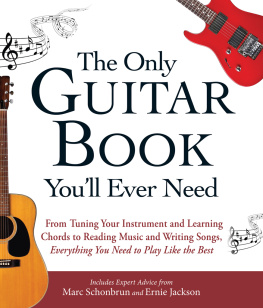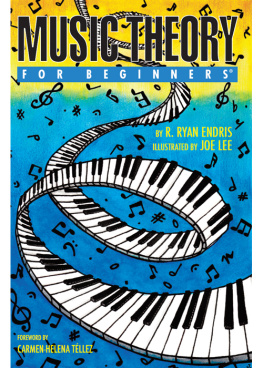THE

ESSENTIAL
MUSIC THEORY
BOOK
A guide to the fundamentals of reading, writing, and understanding music
Marc Schonbrun

Avon, Massachusetts
Dedicated to Mr. Nootie McNooterson. Thank you so much.
Contents
Introduction
Welcome to The EverythingEssential Music Theory Book! This book has a definite purpose and a defined reader. Quite simply, you are here to learn more about music. When you study a musical instrument, you typically work in stages. First, you learn the basics of your individual instrument. You can devote years to learning the techniques and practices that make your instrument work. Many times this study starts in school at an early age and typically includes learning how to read music notation. Many of you who play traditional instrumentsthat is, band and orchestral instruments like flute, clarinet, violin, and cellogot your start in public schools. If so, you got a good foundation of practical work on your own instrument, including reading music and performance. If you studied a nontraditional instrumentsuch as guitar, bass, and pianochances are you received your instruction in a different setting. Many schools only offer instruction in band and orchestral instruments, although that is starting to change.
Depending on the instrument you chose, you may or may not have a strong background in reading music. For example, pianists typically are well grounded in reading, while many guitarists are not. This book is the logical follow-up to The EverythingReading Music Book, whose premise was to present a logical way for all players to learn to read musical notation. This is a critical step, and if you are not comfortable with it, youd be wise to check out that book as well. While the first chapter of this book is a review of basic concepts, music reading will not be covered in depth and you will need to understand notation. If you arent sure of your reading, or just want a companion text, grab The EverythingReading Music Book as a good start. This book could be considered a silent follow-up, but not necessarily. You can learn theory without strong music-reading skills, but strong skills will make everything easier, at every step.
Your ability to play your instrument well has led you to a common place: the whats next phase. After attaining some mastery of your instrument, things begin to change and the instrument becomes a simple vehicle for musical expression. You begin the transformation from (insert your instrument here) player to musician. As a musician, you start to look at the larger picture of what makes music work and hold together. The word theory is almost always thrown around as an elusive second step toward understanding music. Many players constantly say, I have got to learn more about theory. Many use the word theory as if its a chore, akin to I have to paint the house, or something task-oriented. Let me put that quickly to rest: Music theory is not a task. It actually may be one of the hardest things to define.
Theory wont necessarily make you a better player. Its not guaranteed to improve any part of your musical life. Music theory is not a prediction of music! It is an educated look at what has happened throughout music history. Music has evolved slowly, and theory reviews that journey and tries to make sense of it. Theory will put words to concepts that you have understood all of your life. Never forget that music is sound, and theory has the Herculean task of trying to make sense of sounds and then transforming them into another medium: words. Theory will no doubt help you in all aspects of your life, but its much like buying a new instrument: In the hands of a skilled player, it can make you better, but it is just a tool.
This book is different from other theory books. Many theory books are simply too difficult. They presuppose too much information and typically overwhelm the reader. These books cater to college-level music theory, and rarely are they suitable for self-study. The other problem is their reach. Reach is the ability to speak to a large cross section of readers, regardless of their instrument, ability, and style of music. Many texts focus solely on classical music and only use examples from the canon of classical musictotally ignoring the music that you have grown up with. In writing this book, I wanted it to have as much reach as possible so that you can get the most out of your experience. If your goal is to get on an advanced track to music theory, this book will give you the foundation you need to tackle a much harder book. For example, you will find examples for many different instruments. In the section on chords, youll see guitar chord grids. Typically, theory relies on the piano, and it does so for a good reasonthe piano is an excellent instrument for study. But there are a lot of guitar players out there, and if you can grab a guitar and better understand how chords progress, then this book has reached more readersand that is exactly what it should do.
The first step is a small review of music notation. Okay, folks, its time to learn everything about music theory!
CHAPTER 1
Review of the Basics
Everyone needs a good review! You may not know everything you need to know, or you may have never read a music theory book, so this chapter will give you a brief overview of some of musics visual concepts, such as notes, clefs, and rhythms, so that you can look at later examples in the book and decipher them with ease.
Ins and Outs
Since you will see the language of written music throughout this book, you must be able to read it. There is no way around an inability to read notation. You may be thinking, I can read just fine, but how well do you read in other clefs?

In Europe, musical tradition began with the simple monophonic (one voice) chants of the early Christian era. This was the most common type of music during the Early Middle Ages (from about A.D. 350 to 1050). Polyphonic liturgical music, which is a more complex composition with multiple melodies, developed in the High Middle Ages (from about A.D. 1050 to 1300).
Music theory explores what has been done in other music in order to reach a greater understanding overall. You will need to read in multiple clefs, since standard notation uses treble and bass clefs at a minimum and often throws in alto clef, too. Here is a basic review to help you make sense of what you are reading. There is also a somewhat detailed review of rhythms because it can be a difficult concept to understand; even if you know how to decipher the notes on a staff, you may still be uneasy with the counting aspect. If this chapter is already scaring you, try picking up The EverythingReading Music Book and keeping that around; it will help you greatly in understanding this material!
Notes
What better place to start than with notes? Heres a short sample of music; try to dissect whats going on and see if you have all the information you need.

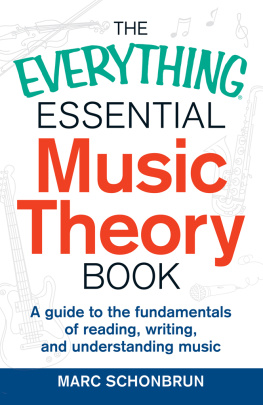

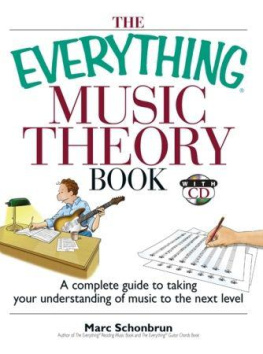
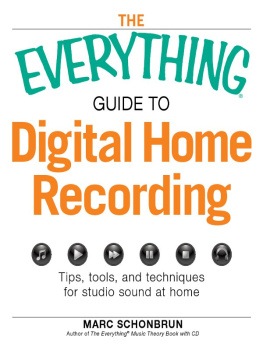

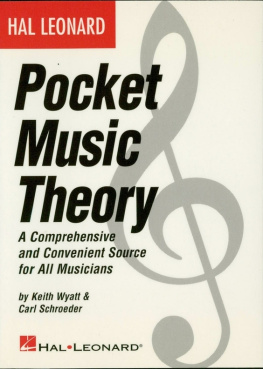
![Michael Miller - Idiots Guides: Music Theory, Third Edition [Book]](/uploads/posts/book/161692/thumbs/michael-miller-idiot-s-guides-music-theory.jpg)
